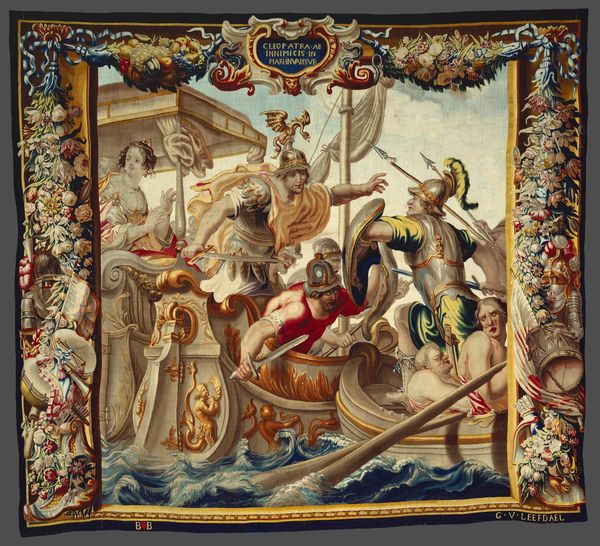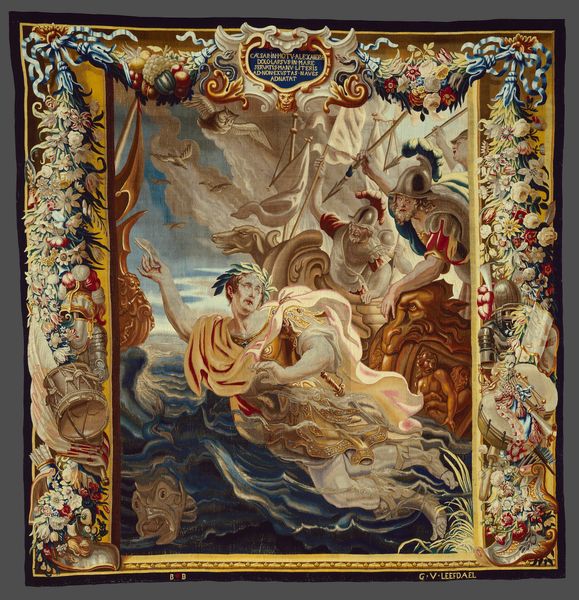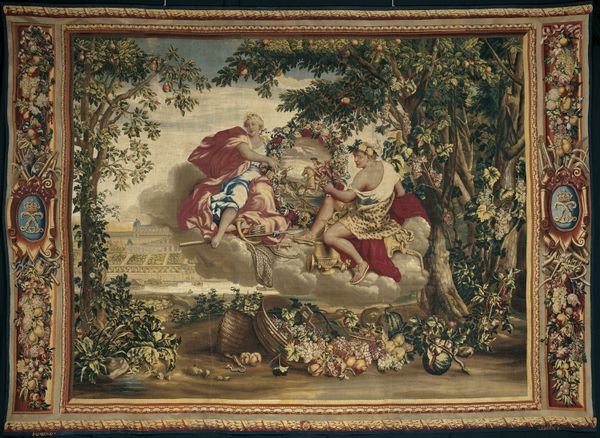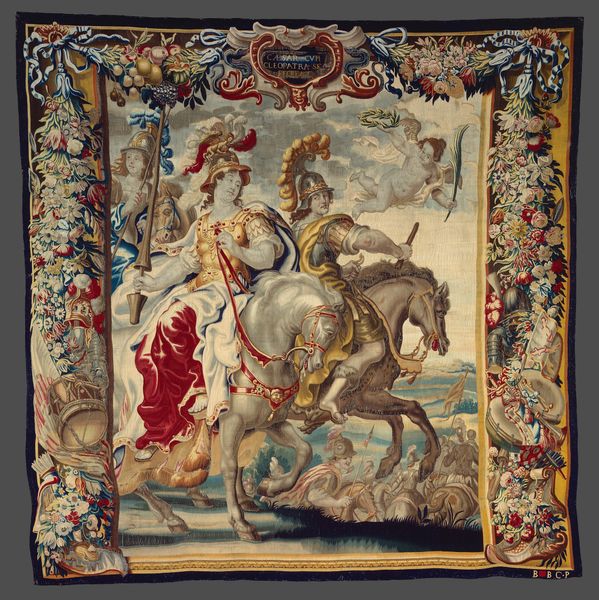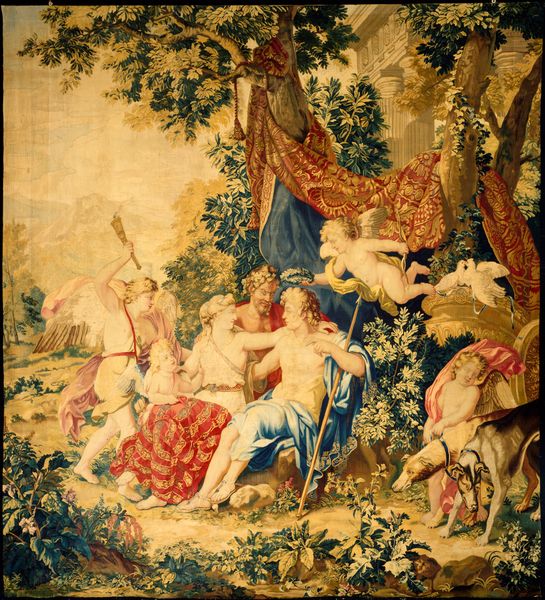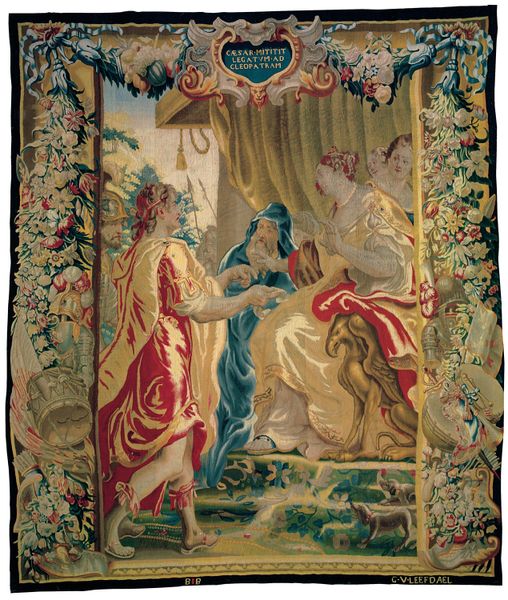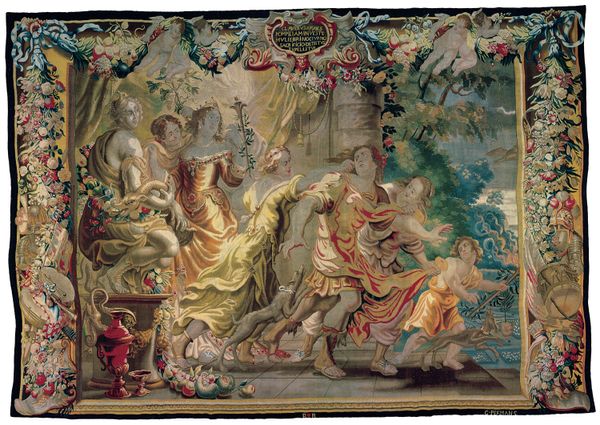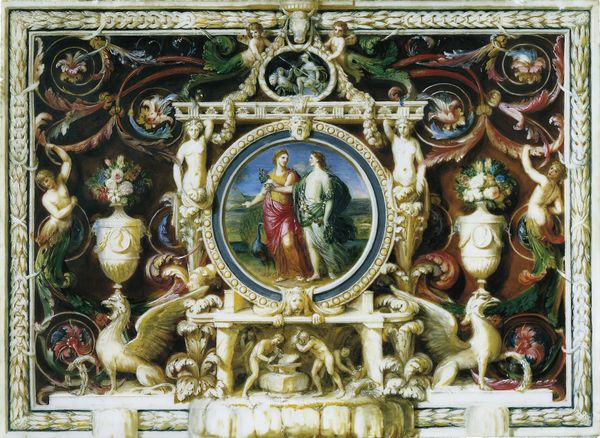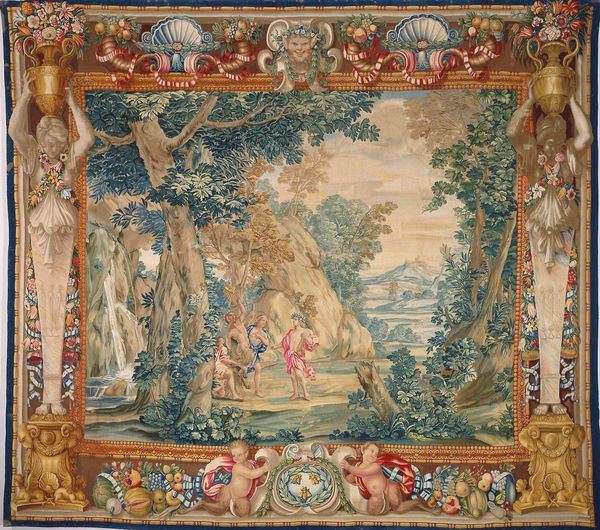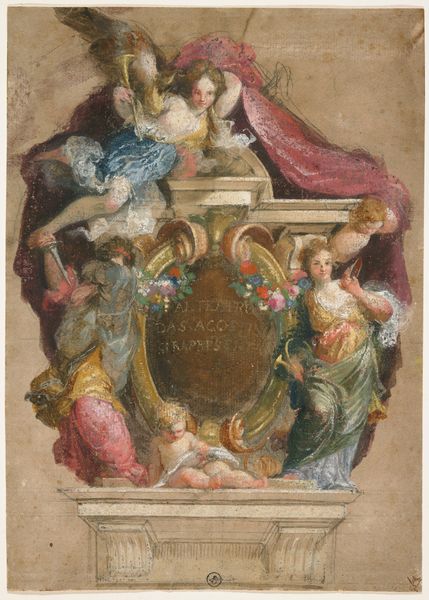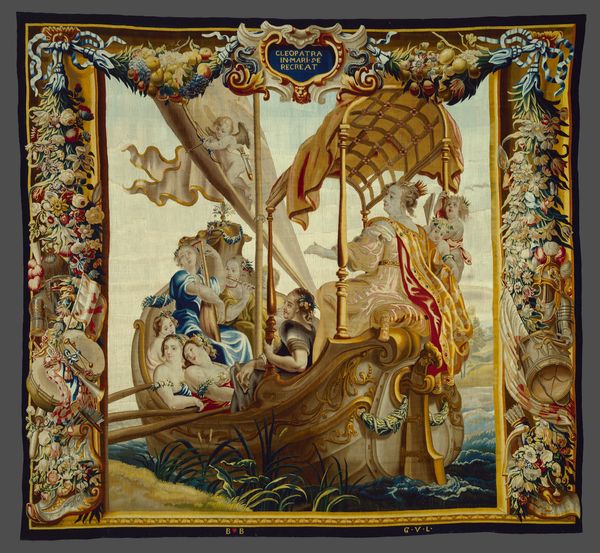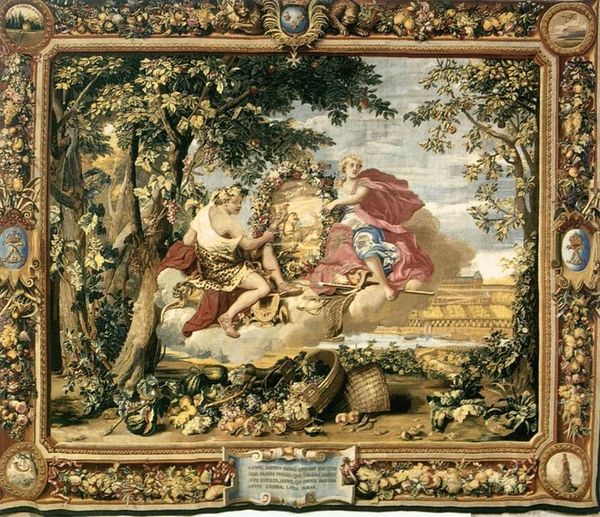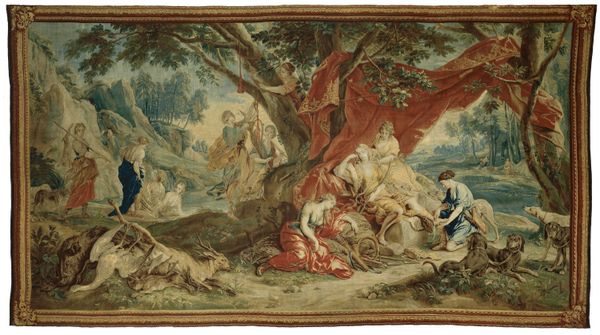
Cleopatra Asked to Pay Tribute to Rome from The Story of Caesar and Cleopatra c. 1680
0:00
0:00
weaving, textile
#
baroque
#
sculpture
#
weaving
#
textile
#
genre-painting
#
history-painting
#
mixed media
#
watercolor
Dimensions: 343.4 × 361.6 cm (135 1/4 × 142 1/4 in.)
Copyright: Public Domain
Curator: Here we have "Cleopatra Asked to Pay Tribute to Rome from The Story of Caesar and Cleopatra," a weaving rendered around 1680. Its creator is Guilliam van Leefdael. Editor: My immediate impression is one of opulence, but there's an odd passivity to it. The palette is muted, almost faded, which adds to this sense of grandeur diminished. Curator: That "diminished grandeur" is palpable. It's meant to reflect the dynamic between Rome, the ascendant power represented by the armored figure, and Cleopatra, reclining and seemingly…awaiting. This scene captures a specific moment in history and then relays it to its 17th century viewers in an engaging image. Editor: Right, it is this very clever, dynamic, almost staged interplay of horizontal and vertical elements that strikes me. Cleopatra’s reclining pose echoes the gentle curves of the boat. But then you have Caesar or his delegate with his strong vertical stance and spear, imposing upon her space. This push and pull, formally speaking, evokes the tension inherent in the historical narrative. Curator: Exactly. It also uses certain iconographic tropes to do it. Watercraft are of course historically associated with passage and navigation, in both physical and metaphysical terms. And of course, water implies liquidity, the potential for instability. Cleopatra’s reign was, after all, characterized by a fragile stability. The textiles, moreover, adds its own symbolic language; its warp and weft mirroring themes of time and destiny. Woven representations of historical dramas can function as a cultural repository, keeping ideas of power, morality and consequence visible. Editor: The floral garlands frame the central scene, don't you think that it is creating a sense of containment? Or are they signifying something of that era's popular allegories, virtues, seasons, etc? The borders act almost like a proscenium, staging the drama within. This technique enhances the performative nature of power, transforming historical narrative into something of spectacle for its audience. Curator: They indeed amplify that theatrical dimension you astutely observed. Tapestries like these acted as mnemonic devices, allowing courtly audiences to participate in both history and artistic representation. Editor: Considering all its formal arrangements alongside the cultural context, this woven narrative becomes a stage. Each component, consciously placed, participates in constructing a narrative of political submission and historical reflection. Curator: Ultimately, it is fascinating to think of all the associations brought to bear on what would have been a purely visual experience for its intended audience. Editor: Absolutely, bringing this Baroque moment to vivid imaginative life!
Comments
No comments
Be the first to comment and join the conversation on the ultimate creative platform.
